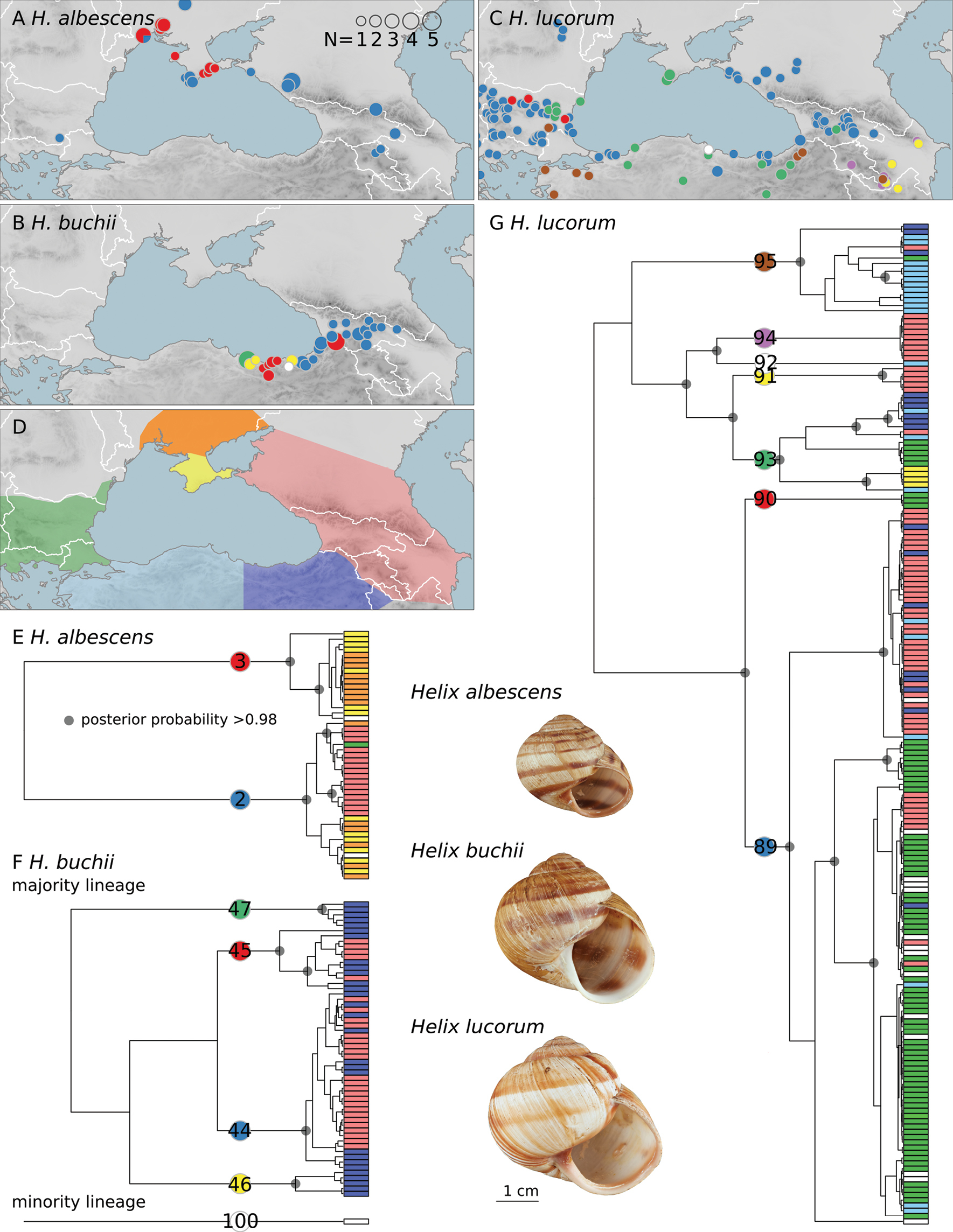
|
||
|
Intraspecific mitochondrial lineages of the Caucasian Helix species and their distribution. A–C. Distribution of major clades (i.e. the branches labelled with correspondingly coloured circles in the trees). Non-native or potentially non-native occurrences are not distinguished. A. H. albescens; B. H. buchii; C. H. lucorum; D. Classification of the discussed regions: southern Ukraine (mainland, orange), Crimea (yellow), the Caucasus region (red), eastern and western part of Anatolia (dark and light blue) and the Balkans (green). The east-west division of Anatolia is for plotting purposes only and coincides with the western distribution limit of H. buchii, which also marks the limit of the wettest area of the Pontic Mountains; E–G. Bayesian mitochondrial trees based on concatenated alignments of partial rrnL, rrnS (only in H. buchii) and cox1 sequences. Supported nodes are indicated by small circles at nodes (omitted from the shallowest nodes), large circles on branches denote the clades used for plotting the maps along with the corresponding numbers of the clades as given in Korábek et al. (2022). Tips are labelled with colour indicating the area of origin as in D (samples from outside the covered area are coloured white). The species are illustrated by shells from Georgia: Patara Dmanisi (H. buchii, ZMH 100320), Armenia: Gegha Valley by Kavchut (H. lucorum, ZMH 101308) and Russia: Kamennomostkiy in Adygea (H. albescens, ZMH 86704). |